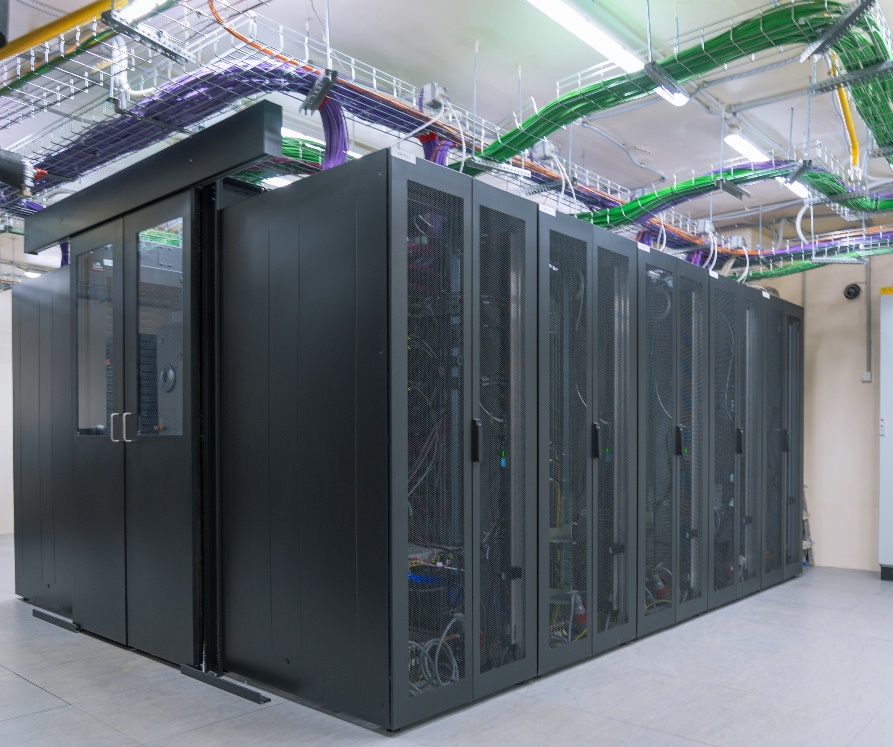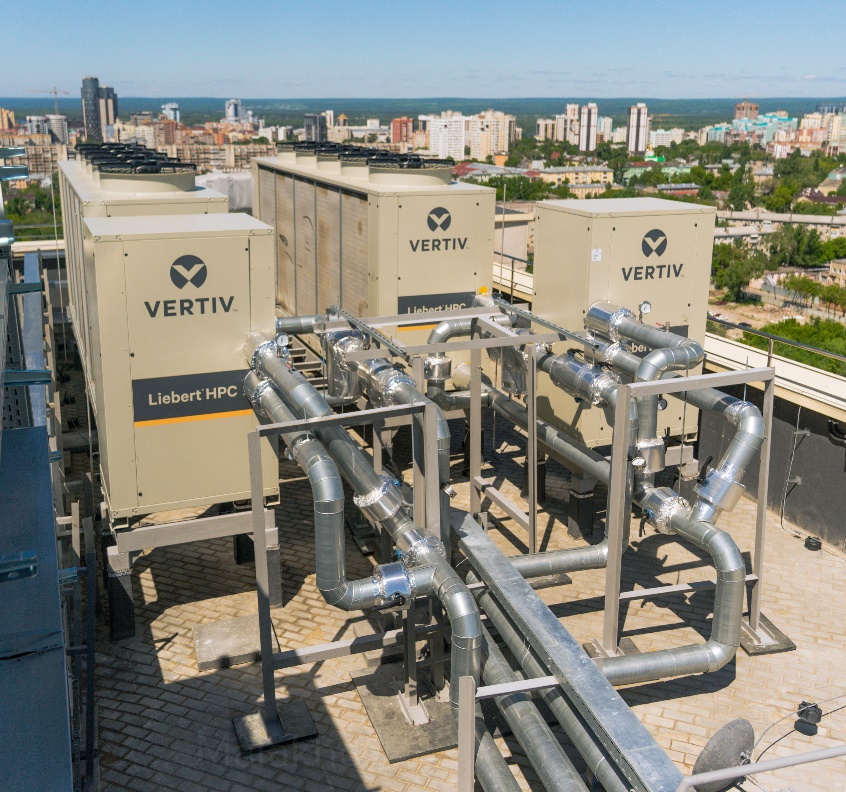STEP LOGIC deploys infrastructure for the Sixth general jurisdiction cassation court
The project was implemented in accordance with the key principles of the transparency of the judicial system.
STEP LOGIC completed the deployment of IT infrastructure for the building of the Sixth general jurisdiction cassation court in Samara. The organisation is the largest cassation court in Russia. Its jurisdiction includes nine subjects of the Volga Federal District with a total population of some 22 million people. These federal subjects include Bashkiria, Mariy El, Tatarstan, Udmurtia, Chuvashia, Kirov, Orenburg, Samar and Ulyanovsk oblasts.
The building at 1 Crimea Square in the Railway district of Samara has a total floor area of 32 thousand square metres. The cassation court will employ 113 judges with its total staff numbering 500 people.

The general contractor for the project is AO Volgatransstroy-9, a company with a wealth of experience in the construction of industrial, civil and transport infrastructure facilities. System integrator STEP LOGIC was selected as the subcontractor for LAN and communication systems: the company designed the ITC infrastructure for the building, delivered the equipment, performed installation, initial set-up and debugging of all the systems.
The building's infrastructure was designed in accordance with the requirements for ensuring accessibility for the disabled. STEP LOGIC installed induction loops in the building to improved comfort for the hard of hearing. The bathroom and security areas in the elevator halls have been equipped with communication systems allowing low mobility individuals to contact the security station.
In order to direct visitor traffic and structure visitor appointments, digital queuing and court hearing scheduling systems are used that comprise 4 floor mounted sensor kiosks, 6 digital displays in the entrance hall and 42 LCD displays on the floors where hearings are held. These allow visitors to read about the rules of conduct in court, see sample claims and motions as well as get access to other information.
An important element of the project was an audio and video conferencing systems because the cassation courts generally review some 80% of all their cases remotely. In addition to 38 court hearing halls, the system also covers the conference hall, the main hall and the presidium room, the press centre, the board room and the offices of the chair of the cassation court and deputy chairs of the court.

So as to enable all interested parties, including citizens of other countries, to take part in court proceedings, a simultaneous interpretation system has been deployed to enable presentations to be simultaneously interpreted from two languages. Transparency of court proceedings was further increased by the deployment of the NESTOR.JUSTICE audio and video recording system that automatically records all hearings and reviews.

Digital interaction with law enforcement agencies, federal and regional executive authorities is implemented through a set of communications systems based on solutions supplied by the Ministry of Communications of Russia. In order to organise access to the Justice automated system as per Federal Law No 262-FAZ on Ensuring Access to Information about the Activities of Courts in the Russian Federation, STEP LOGIC technicians have equipped one main and one reserver server rooms in the building.

A highly reliable and secure IT infrastructure has been deployed in the building. It consists of data storage and backup systems, a virtualisation platform and information infrastructure services. The design of the information security system takes into account the requirements for standardised solutions used in courts. A multi-tier echelon security system was deployed, which includes firewalls between different levels of the network, encrypted gateways, solutions to ensure security for the virtualisation environment and protection against unauthorised access, an antivirus system, a vulnerability scanner, a security events monitoring, analysis and correlation system.
Over 1 million metres of cable was used to create a structured cabling system for 7.5 thousand ports. A local area network was built, divided into 6 sections with information flow between them being segmented and monitored with the help of integrated network security systems. A public Wi-Fi network was deployed for visitors to the court.
Special attention was paid to the safety of employees and visitors. More than 400 CCTV cameras have been installed to monitor entrances, the underground parking lot and public spaces in 24/7 mode. Access monitoring and management systems were deployed as well as radio signal suppression systems on the entrances to the building, security and emergency alarms.
In addition to a fire alarm system comprising 5300 detectors and an emergency PA and evacuation management system, the court building also has automatic fire suppression systems and an indoor firefighting water supply system. The building also has an autonomous telephone line connecting it with the emergency response service headquarters.

The building is equipped with uninterrupted guaranteed power supply systems. In the event of an emergency or a power outage these systems will supply power to the firefighting system, communication systems, automatics, scheduling and ICT systems.
The state of the structural elements of the 24 story building is monitored by a monitoring system comprising 13 tilt-metres and 10 digital three-component accelerometers. In the event of serious deviations from standard parameters this system will send emergency messages to the control panel of the dispatch service, which also monitors the operation of the utility systems of the building. In addition to collecting data about the state of the property in real time, the dispatch service system allows for remote control of equipment operation modes and warns about any possible deviations from standard parameters of operation.
An automated monitoring and management system has been created for utility equipment and systems to monitor and manage all ICT and utility systems of the building and ensure their effective operation. The automated monitoring and management system collects sensor information about the state, parameters and operating modes of equipment in over 30 systems, including heating, ventilation, air conditioning, water supply, smoke removal, power supply, fire safety.
«During construction we ran into a number of challenges, the chief of which was that everything had to be completed in a fairly short period of time. The bulk of the work took 14 months, which is almost 2 times less than is the standard for facilities on such a large scale. The court building didn't have the right conditions for housing complex infrastructure as it was built more than 10 years ago and was originally intended for completely different purposes, – says Mikhail Pilipenko, Head of Business Development at STEP LOGIC. – Despite these challenges we have managed to achieve our main goal and create a 21st century digitised court building that is fully secure and accessible to all categories of visitors. To a large extent this was made possible by BIM modelling during the design of utility systems and server rooms. The 3D model allowed us to coordinate deployment of numerous systems while taking into account the specific configuration of the building, making any necessary changes to the documentation and visually assessing layout solutions, including through the use of VR».
About STEP LOGIC
STEP LOGIC company (step.ru) is a member of GKS group of companies (AO Sistematika Group) with 27 years of experience in providing network and system integration services for the Russian market. The company has more than 600 employees with its offices based in Moscow, Kazan, Yerevan and Almaty. The company employs over 350 engineers and system architects certified by the world's leading manufacturers. The company has high-level authorisation with such vendors as APC by Schneider Electric, Avaya, Check Point, Cisco Systems, Crestron, Dell Technologies, Extron, Fortinet, HPE, Huawei, IBM, Juniper Networks, Lenovo, Microsoft, Polycom, Unify and others. The range of solutions and services includes network and systems integration, audio and visual solutions, development of videoconferencing systems and contact centres, integrated security, data processing and storage services, network and engineering infrastructure development for buildings, the Internet of Things, as well as a full range of services for technical support and maintenance of information systems including IT consulting, auditing and outsourcing.